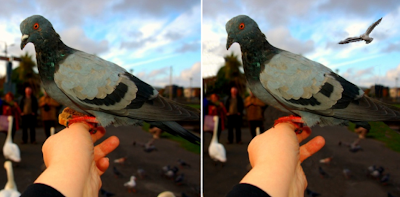
Help! Your teacher’s just told you to write a comparison between two or three poems, but you don’t know how…
Don’t panic! Just follow these simple steps: first, figure out what’s the same and what’s different. This is where a mind-map or table would help – especially if you’re trying to compare three.
Don’t panic! Just follow these simple steps: first, figure out what’s the same and what’s different. This is where a mind-map or table would help – especially if you’re trying to compare three.
1. Topic / Theme – you can assume that if your teacher has picked out poems for you to compare, then the subject, topic or theme will be more or less the same. For example, you may have three poems about the dark side of love. What to look for is the subtle differences. For example: (a) murderous – psychopathic – jealousy vs (b) playful combat vs (c) self-destructive rage.
2. Voice – is it a dramatic monologue or the voice of the poet? If it’s a character you need to comment on how the character is presented.
3. Mood – for all texts, figure out if the overall mood is jaunty, jolly, sensual, light, dark, bitter, violent, vile or something else. Notice if the mood changes. Then think, how does this mood contrast with or support the content? For example is it a poem about murder in a jolly, sensual tone? Or is it about hate in a violent, bitter tone? Is it playful?
4. Structure – look for any interesting differences, similarities or combinations. For example – long, flowing unbroken thought or tightly clipped, controlled structure. You’ll need to use your wits to figure this one out!
5. Language techniques – consider which combination of techniques each poem uses the most – metaphorical vs realistic language, sensual, sensory language, vs violent language, colloquial or elegiac etc. Look for opposites and pairs. Notice anything interesting? How do these techniques support or contrast with the content, context and mood of each idea?
Done that? Write up your ideas in a mind map, bullet points or in a rough draft that you can edit later.
Done that? Write up your ideas in a mind map, bullet points or in a rough draft that you can edit later.
How to Structure Your Essay:
General Advice
General Advice
1. First paragraph: describe basic facts about all poems, stating similarities and differences in – topic / tone / pov / voice / structure, conclusions. DO NOT go into detail about language yet.
2. Secondly: write about the structure of only TWO of the poems. Explain how different structures are used to present the same themes. I find this a simple way to get started.
3. Continue to compare the poems you were writing about in 2. – OR break out and start writing about ONE of the poems. Make sure you write about it in detail.
What NOT to do throughout your essay: write one sentence about the first poem, a second sentence about the second, followed by a third sentence about the third! You need a method that will give enough space to develop your explanations fully.
DO make links (briefly) where it seems especially relevant.
Some Examples
Here are some essays where I’ve compared poems, so you can see the method in action.
Two Shakespearean Sonnets
Two Simon Armitage poems about Identity
Two poems about Place
Two Carol Ann Duffy poems about love (with notes about what would make it an A* grade)
Two Simon Armitage poems about Identity
Two poems about Place
Two Carol Ann Duffy poems about love (with notes about what would make it an A* grade)
